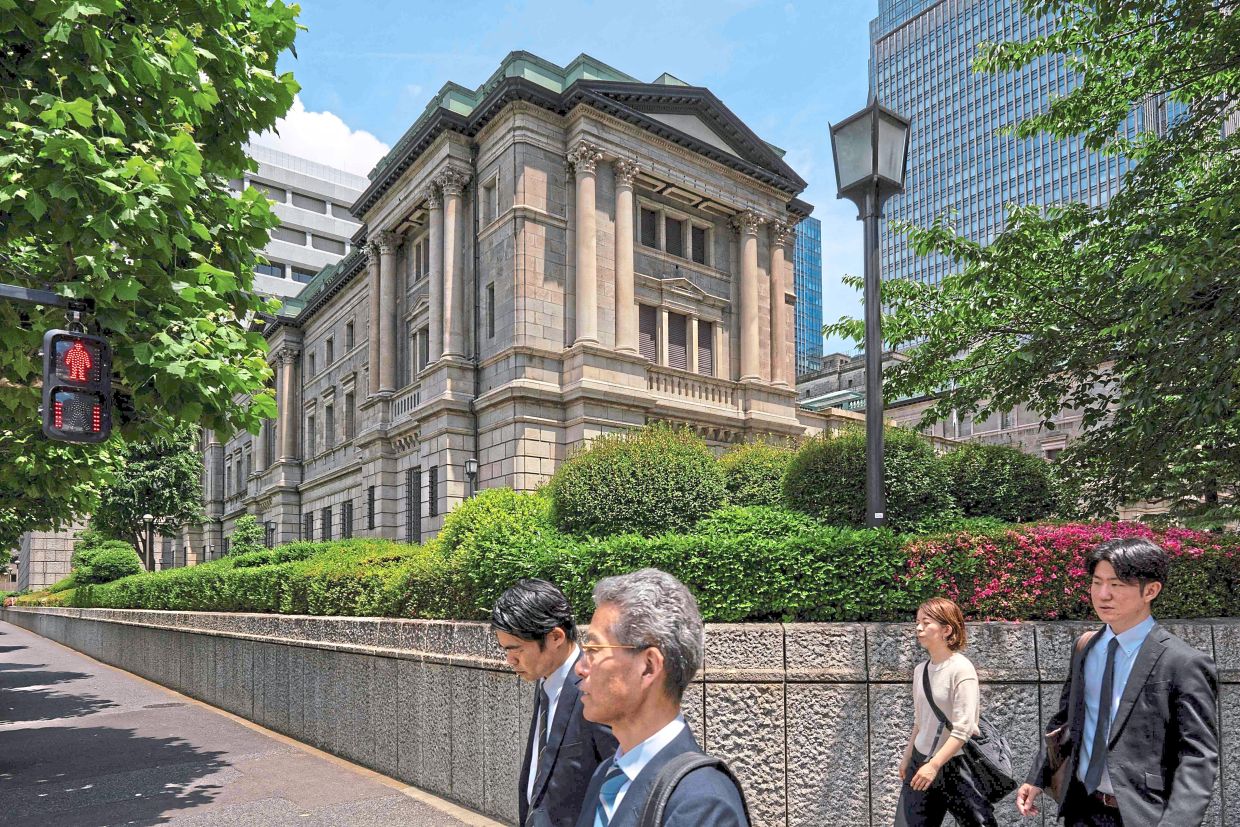Tokyo: Japan’s economy showed scant sign of a clear recovery with its narrower-than-first-estimated contraction leaving plenty of reason for continued caution among policymakers as the Bank of Japan (BoJ) eyes the timing of its next interest rate hike.
Gross domestic product (GDP) shrank at an annualised pace of 1.8% in the three months through March, the Cabinet Office said yesterday, compared with a 2% retreat reported in preliminary data. Economists had forecast the updated figures would be unchanged.
The data showed both consumers and companies cutting back on spending and unsold supplies building up on warehouse shelves as the strongest inflation trend in decades continues to crimp outlays in real terms.
“The data confirmed weakness in consumption. A breakdown shows spending on durable goods was weak, which I think reflected the impact of the Daihatsu problem on auto purchases,” said Toru Suehiro, economist at Daiwa Securities. “The BoJ doesn’t have a choice but to be cautious about the economy.”
Personal consumption data were left unchanged at minus 0.7%, marking a fourth quarter of declines, while business spending figures were revised to minus 0.4% from a preliminary decline of 0.8%.
Inventories added 0.3 percentage point to growth, while net exports were tweaked to reflect a slightly larger drag on the economy.
Weak consumption is a source of concern for the government and the BoJ as authorities seek indications that demand can withstand persistent inflation.
Economists expect the central bank to hold its benchmark policy rate steady at a two-day meeting concluding on Friday, with many predicting a hike by October.
A rebound in growth in the current quarter is widely expected as the economy recovers from the effects of one-off factors including a New Year’s Day earthquake north-west of Tokyo.
An auto production halt due to a certification scandal also weighed on growth in the period. While that output has since been restored, a fresh scandal may exert a drag in the current quarter.
Strong second-quarter GDP data, initially due in August, would be a positive development for Prime Minister Fumio Kishida, who will have to prevail in the ruling party’s next leadership contest in September to stay in power.
Among risks to the outlook, households are set to see a rise in utility costs as the government phases out subsidies.
Meanwhile, workers have seen declines in real wages for more than two years, while retirees on fixed income have been hit even harder as they cope with inflation at or above the BoJ’s 2% target.
Higher costs for imports due to the yen’s slump may further lift food and energy prices.
Many households will get some help in the form of one-off tax rebates starting in June.
While Kishida hopes the measure will help eradicate the nation’s deflationary mindset, economists have been lukewarm in assessing the likely impact of the steps.
Still, analysts expect real wages adjusted for inflation to turn positive in coming months after annual wage talks resulted in pledges by large companies to lift pay by more than 5%.
The weak yen also has some positive effects for the economy, boosting corporate earnings abroad and inbound tourism.
The fragile economic picture complicates the path of policymaking.
The BoJ is likely to discuss the reduction of its government bond purchases as early as this week, as it continues to normalise its policy following its historic interest rate hike in March, according to people familiar with the matter.
“It’s difficult for the BoJ to raise interest rates significantly, given the current weakness of domestic demand,” said Shumpei Goto, researcher at the Japan Research Institute. “On the other hand, the weak yen has pushed up prices of food and non-durable goods, which in turn has reduced consumer spending, so there is a possibility the BoJ will slightly alter its course” through tweaking bond purchase plans or other means. — Bloomberg



